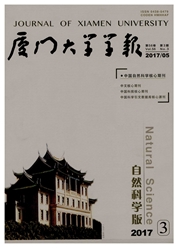

 中文摘要:
中文摘要:
对从7个不同地方采集的7份辣木(Moringa)材料进行了ISSR标记分析.结果表明,被测材料间ISSR标记多态性较高.从18个ISSE引物中筛选出6个可扩增出清晰的且具多态性的条带的引物,共扩增出75条带,其中59条具有多态性,占总扩增带数的78.67%,其中每个引物可扩增出4—14条多态性带,平均10.17条.ISSR标记遗传相似性系数(GS)变异范围为0.5570~0.8367,平均值为0.6876±0.0809.聚类分析表明,7份辣木材料可以聚为四类,其中MS2为单独一类.ISSR标记可以有效地评价辣木植物遗传分化并为辣木种类的鉴别提供一定的理论依据.
 英文摘要:
英文摘要:
Inter-simple sequence repeat (ISSR) method was applied to detect the genetic variation and relationship among seven moringa plant samples represented from MS1 to MS7. MS1 and MS3 were Moringa ovalifolia,MS5 was M. oleifera PMK,MS6 and MS7 were M. stenopetala and MS2 and MS4 were unknown. Six effective ISSR. primers selected from 18 ISSR primers generated 75 bands,of which 59 were polymorphic,reaching to 78.67 % of all bands. Each primer was able to generate 4 to 14 polymorphic bands and average was 10.2. Genetic similarity values between samples varied from 0. 557 0 to 0.836 7. Based on UPGMA duster analysis,MS6 and MS7 were classified into a group, MS1 and MS3 were other group,MS4 and MS5 untightly clustered with the group of MS6 and MS7 and then with the group of MS1 and MS3. MS2 was classified into a single group due to the farthest genetic distance to others. The result of duster analysis was identical to expectation ,suggesting that ISSR method was able to evaluate genetic variation of moringa effectively and was applied to the idetification and classification of morginga phnts.
 同期刊论文项目
同期刊论文项目
 同项目期刊论文
同项目期刊论文
 期刊信息
期刊信息
